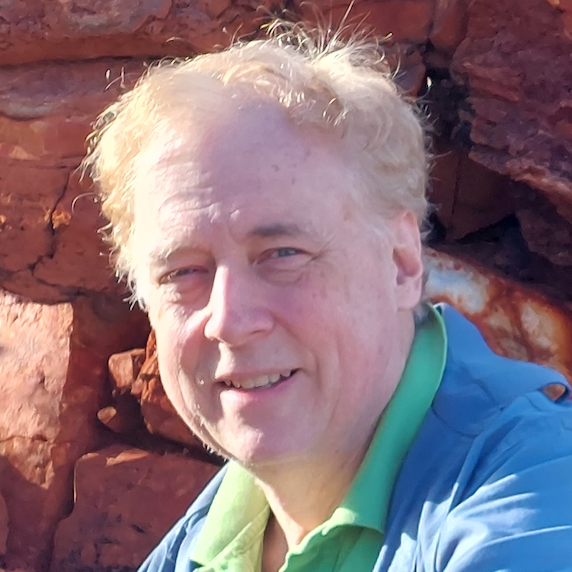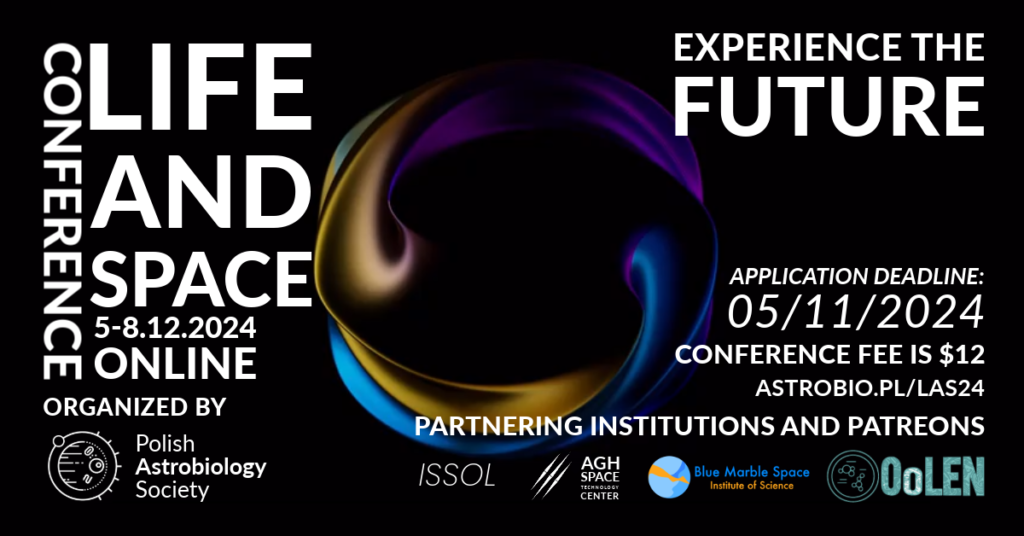Steven Benner

Meet our speaker
Steven Benner obtained his B.Sc. and M.Sc. in Molecular Biophysics and Biochemistry at Yale University and his Ph.D. in Chemistry at Harvard University. He has been a professor at Harvard University, ETH Zurich, and the University of Florida, where he was the V.T. & Louise Jackson Distinguished Professor of Chemistry.
In 2005, he founded the Foundation For Applied Molecular Evolution (FfAME) and The Westheimer Institute of Science and Technology (TWIST). He also founded several biotechnology companies, including EraGen Biosciences and Firebird BioMolecular Sciences LLC. He has contributed foundational technology to many other biotech companies, including Alantos, Bayer, Siemens, Therascope, and DNA Script for their drug discovery programs, diagnostics products, and biotechnology platforms. His work delivered diagnostics products that are widely used in medicine, and ways to produce new classes of therapeutics.
His laboratory was the first to synthesize a gene encoding an enzyme, a foundation for the field of synthetic biology. This work contributed new methods for the syntheses of DNA and new methods to sequence DNA. He was also the first to make DNA with more than four nucleotide building blocks, expanding the “genetic alphabet” from four nucleotide “letters” to 12.
In biology, Steven was instrumental in establishing the field of paleogenetics, where ancestral genes and proteins from now-extinct organisms are resurrected for laboratory study. He has also been active in the field of astrobiology, where his work has offered experimental paths for the origin of life, an understanding of exotic chemistry in planets and moons such as Venus and Titan, and new strategies to detect alien life that may differ in its fundamental chemistry from life on Earth.
His most recent book is Life, the Universe, and the Scientific Method.
Lecture on 7.12.2024 19:00 [CET]
Why and How to Seek Life Existing Today on Mars
The Viking 1976 mission to Mars observed:
- Fixation of 14C from 14CO2 and 14CO presented in the atmosphere above the soil
- Emergence of 14CO2 from 14C-food fed to the soil in water
- Release of O2 from the soil when moistened.
Under standard models for how science develops, “dueling theories” should then have emerged to analyze these results under two models, one based on the premise that these observations were created by endogenous Martian life, the other denying that premise.
Unfortunately, development of this dialectic was cut short when gas chromatography-mass spectrometry data were misinterpreted as showing that the Viking soil lacked organic molecules, this despite the delivery of organics to the Martian surface continuously by meteorites. Viking Project scientist Gerald Soffen declared the conclusion: “That’s the ball game. No organics, no life”.
The conclusion that the Martian soil lacks organics has been known to be incorrect for a quarter century. In 1999, Benner et al. noted that the GC-MS could not have detected the primary organic molecules expected from meteorites even if they were abundant [1]. In 2010 [2], Navarro-Gonzales et al. explained the GC-MS results under a model that presumed a presence of organics and perchlorate. Rovers have found many organics in the Martian soil [3].
However, in a fascinating example of sociology in science, these developments failed to overturn the “community consensus” that had emerged in 1976 and the immediate aftermath. This consensus had become fixed in the minds of the generation of scientists who were taught it.
The progression of ideas is worth summarizing [4]. In 1976, the need to find a slow soil oxidant to explain the absence of meteoritic organics expanded (unnecessarily) to a need for that oxidant to also explain the rapid release of O2 from the soil when moistened, and the release of 14CO2 from radiolabeled food. Both processes occurred over minutes. This in turn led to the view that the Martian soil was “self-sterilizing”. This, in turn, influenced the segment of the community that served on panels writing the Decadal Survey, the segment that makes decisions about what NASA missions to fly, and what NASA missions to not fly.
Thus, convinced against all evidence that the Martian accessible surface could not hold extant life living today. the 2013 Decadal Survey decided to limit Martian astrobiology to activities to seek evidence for long-extinct life [5]. Despite a report from a 2019 Carlsbad conference where astrobiologists laid out the case for an extant biosphere on Mars [6], a committee empaneled by NASA and led by Victoria Meadows and Heather Graham, hoping to fix community standards against which to judge claims for life-evidence, repeated the 1976 misinterpretation of the Viking results as fact [7], evidently without being aware of any of this history [8].
For these reasons, only in the past two years has progress been made to establish the dialectic necessary for a healthy science concerning Mars life. A pro-life model has asked what lifestyle might make a bacterial photosynthetic autotroph fit to survive in the Viking soil given the scarcity of atmospheric O2. On Earth, photosynthetic microbes release into the atmosphere O2 that they generate in daytime as they fix organic carbon, confident that they can recover O2 from the atmosphere when they respire some of that fixed carbon at night. On Mars, low atmospheric O2 makes similar confidence unwarranted. Thus, to be fit for survival on the surface, photosynthetic autotrophs must store O2 generated in the day for respiration at night [9].
This BARSOOM model (bacterial autotrophs respiring with stored oxygen for overnight metabolism) accounts for the three Viking results thus:
- Fixation of 14CO2 is the key autotrophic process
- Emergence of 14CO2 from 14C-food fed to the soil is the key respiratory process during the night.
- The O2 released when the Viking soil when moistened was the O2 stored for overnight metabolism.
From a Terran biology perspective, BARSOOM faces these further challenges:
(a) The scarcity of liquid water, distant from frozen water below by a few meters.
(b) A need to block destructive UV light while accessing light needed for photosynthesis.
While non-life dialectical models have attributes, and while other bio-metabolisms must be considered as alternatives to the BARSOOM lifestyle, the fact that one can easily build a plausible biology at the Viking sites that is consistent with all available data suggest the following to the planetary protection team:
(c) Life is quite conceivably in many locales on the Martian surface, not just in special regions.
(d) The long community delay in seeking extant life robotically was misguided, especially since the Polyelectrolyte Theory of the Gene [10] provides a universal way to concentrate it for detection.
(e) With human visits likely in the next ~3 launch windows, life detection missions are urgent.
References
[1] Benner et al. (2000). The missing organic molecules on Mars. Proc. Natl/ Acad. Sci. USA 97, 2425.
[2] Navarro‐González et al. (2010). Reanalysis of Viking results suggests perchlorate and organics at mid-latitudes on Mars. J Geo Res: Planets, 115 (E12).
[3] Millan et al. (2022) Organic molecules revealed in Mars’s Bagnold Dunes by Curiosity’s derivatization experiment. Nature Astronomy 6, 129-140.
[4] Benner (2023) “Why does the NASA culture still get Viking 1976 wrong?”. Primordial Scoop, e20231113. doi.org/10.52400/OMNN6244
[5] Rummel, J., Conley, C. (2017) Four fallacies and an oversight. Astrobiol 17, 971
[6] Carrier, et al. (2020) Mars extant life. Astrobiol. 20, 785
[7] Meadows, V. et al. (2022). Community Report from the Biosignatures Standards of Evidence Workshop. arXiv preprint arXiv:2210.14293.
[8] Harrison, Benner (2022) Does NASA’s drive for consensus make young scientists susceptible to being trampled by mastodons?” Primordial Scoop, e20220525. doi.org/10.52400/DVGO6088
[9] Benner (2023) The BARSOOM model for life on Mars. Primordial Scoop, e20231118. doi.org/10. 52400/USVX5880
[10] Benner (2017) Detecting Darwinism from molecules in the Enceladus plumes, Jupiter’s moons, and other planetary water lagoons. Astrobiol. 17, 840
